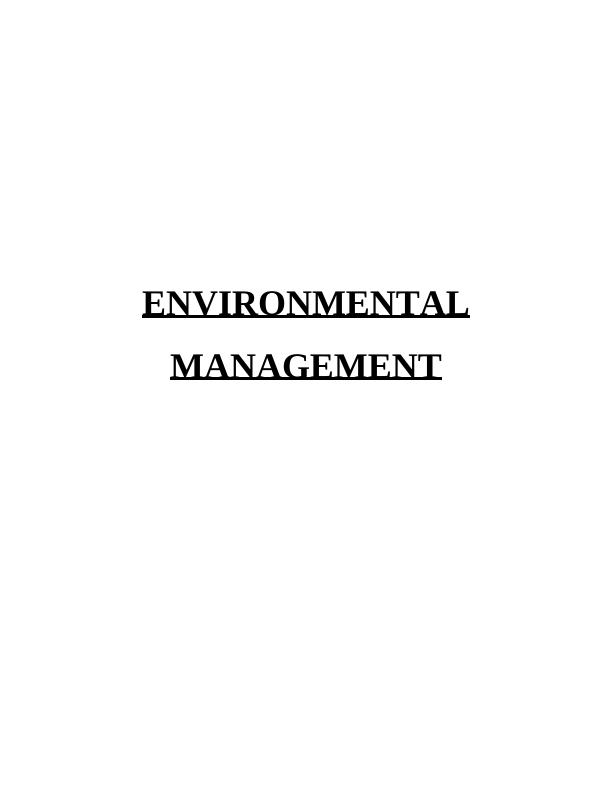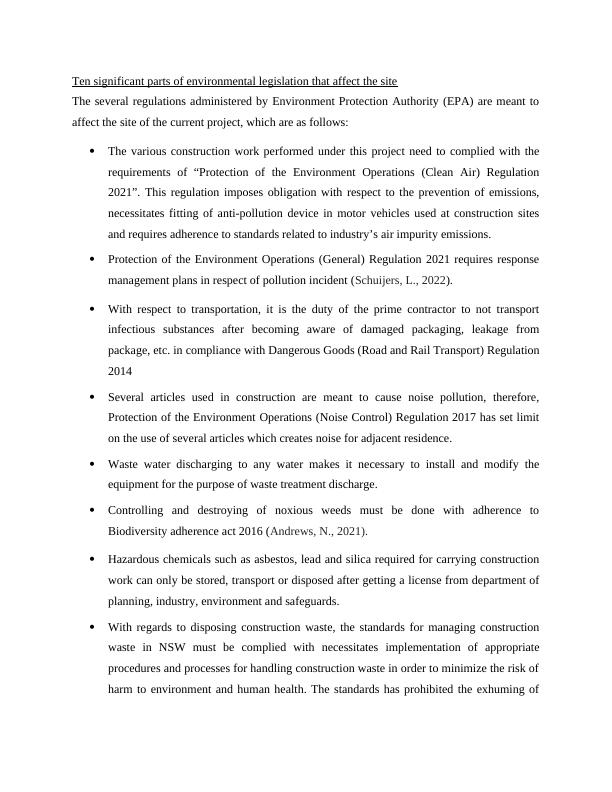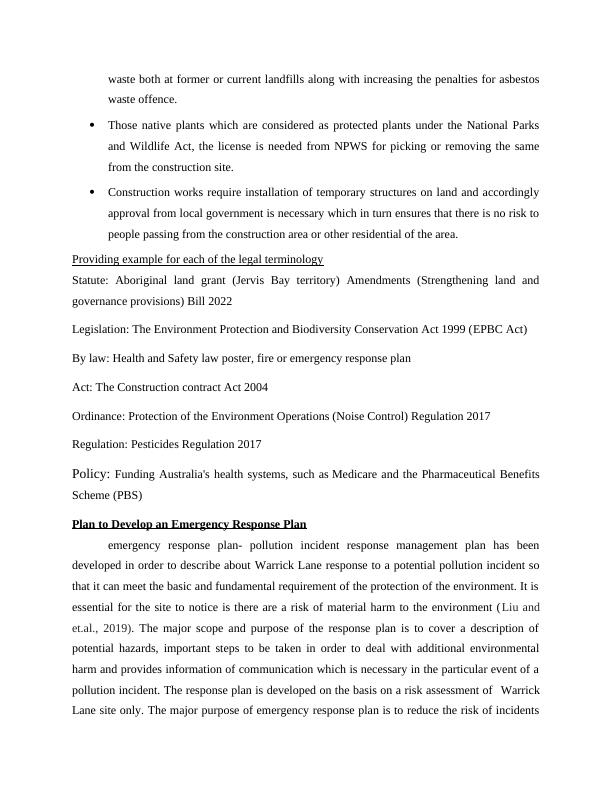Environmental Legislation Affecting Construction Sites: An Overview
7 Pages2034 Words383 Views
Added on 2023-06-10
About This Document
This article provides an overview of the ten significant parts of environmental legislation that affect construction sites, including the Protection of the Environment Operations (Clean Air) Regulation 2021 and the Dangerous Goods (Road and Rail Transport) Regulation 2014. It also discusses the role of environmental managers in the development phase and outlines the five key steps in procedure development. The article includes references to relevant books and journals.
Environmental Legislation Affecting Construction Sites: An Overview
Added on 2023-06-10
ShareRelated Documents
End of preview
Want to access all the pages? Upload your documents or become a member.
Construction Management: Permits, EMP, Waste Management, Stakeholders, Time Program
|17
|2901
|119
Construction Site Regulations: Codes and Regulations to be Observed
|10
|745
|334
Environmental Impacts of Oil & Gas Industry
|1
|652
|145
Assignment on Environmental Health
|11
|790
|19
Implement and Monitor Environmentally Sustainable Work Practices
|20
|4953
|498
Public Health
|5
|714
|311



